コラム
落合憲弘
John Sypal
タカザワケンジ
なぎら健壱

Here we are, now halfway through the 2020s. The world is as uncertain as ever, and while supposedly an age of digital-connectedness, increased levels of loneliness and solitude are being recognized as destructive social health issues- particularly for young people. Due to habits formed around the glowing ease of technology, some consider this the “anti-social century”.
In my mid-forties, I’m one of the last generations to clearly remember what life prior to our species-wide adaptation of the smartphone- and indeed, even the internet- was like. At times it’s hard not to get a little nostalgic for the 1990s. It seems more than enough time has passed- and more than enough things have happened- distance to give the decade the look it deserves. And while I personally never did an all-nighter in a Shibuya or Roppongi club, Meisa Fujishiro’s “90 Nights” is a wonderful look back at an energetic, connected time.
Fujishiro spent much of his twenties in the many dance clubs that had sprouted around Tokyo, snapping portraits of his fellow partiers with the era’s representative camera, a Konica BIGmini. Blessed with an unassuming design, the Big Mini’s quick autofocus and a brilliant flash-balancing function made it the best possible camera for such an environment. Unlike a bulky SLR this unthreatening, admittedly cute camera could be pulled from a pocket on a whim. It’s safe to assume that anything else might have stifled the intimacy found in the portraits Fujishiro created among the crowds. While he later went on to become a popular and successful photographer, for one reason or another, with the dawn of a new chapter in his life, these early nightlife negatives were stashed away for over twenty years.
The rediscovery of these negatives- and the realization that a photobook of this particular era and scene had yet to be published by anyone, pushed Fujishiro to take another look. With a film scanner for a time machine, he found himself back amongst the people and nights preserved in the frames. Switching between raucously crowded, beat-throbbing pictures and captivating portraits, the work was edited and collected into a handy-sized paperback and published by the magazine house Transworld Japan in 2018.
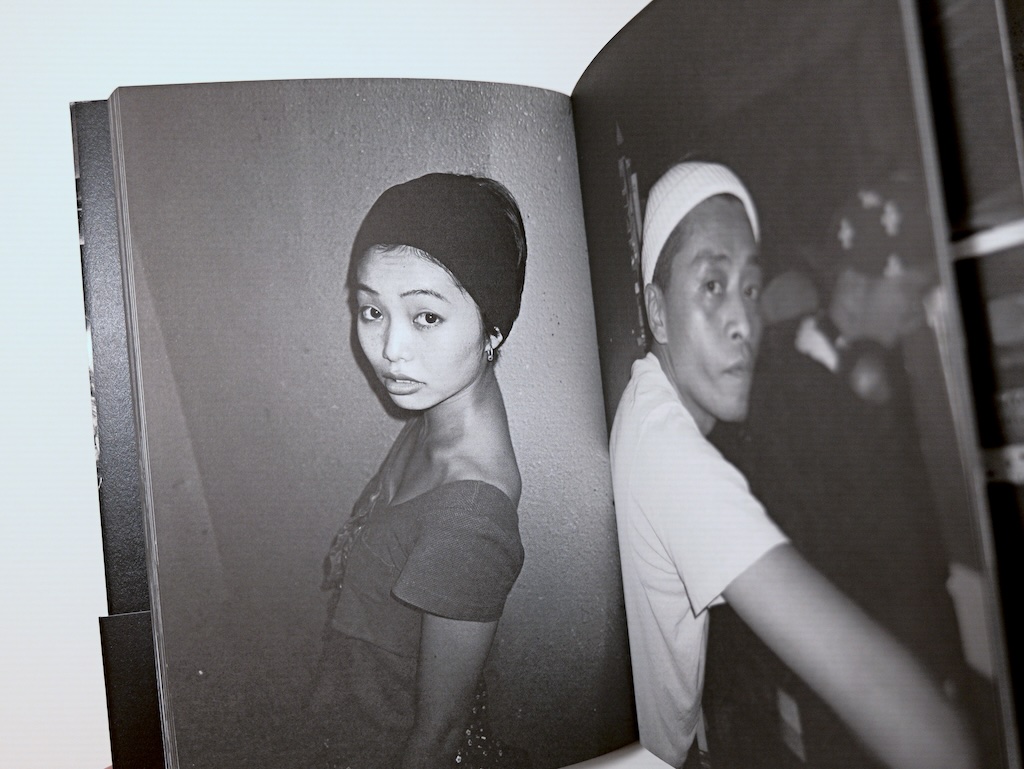
What’s most striking to me about Fujishiro’s club pictures is the charming innocence they possess. Certainly, the carefree subjects (and their 90s fashion) themselves are a delight. And yet I can’t help but notice what ISN’T in these pages- in this case, a lack of the kind of Self Awareness that’s saturated contemporary culture. These pictures- intuitive, impulsive, 35mm exaltations- are celebrations. The youth in them are individuals who went somewhere to enjoy and experience something in the moment, together. It’s thrilling to see how, instead of catering to online strangers- or caring about the carefully presented “lives” of people online- everyone in these pictures were there for each other, at that moment. “Being present” was default- the kids here had no risk of being lulled into the escape offered by a glowing, handheld screen.
In conjunction with the book’s release, “90 Nights” was exhibited twice in 2018.
The first exhibition, held from May 26 – June 3, 2018, was held at Book Marc in Omotesando. While Book Marc has since relocated to the new PARCO in Shibuya, its previous location that hosted this show was a unique, high-ceilinged gallery space in the basement of the bookshop. It was the only gallery I know where one’s first glimpse of an exhibition was from above, seen as you descended a metal staircase into the venue.
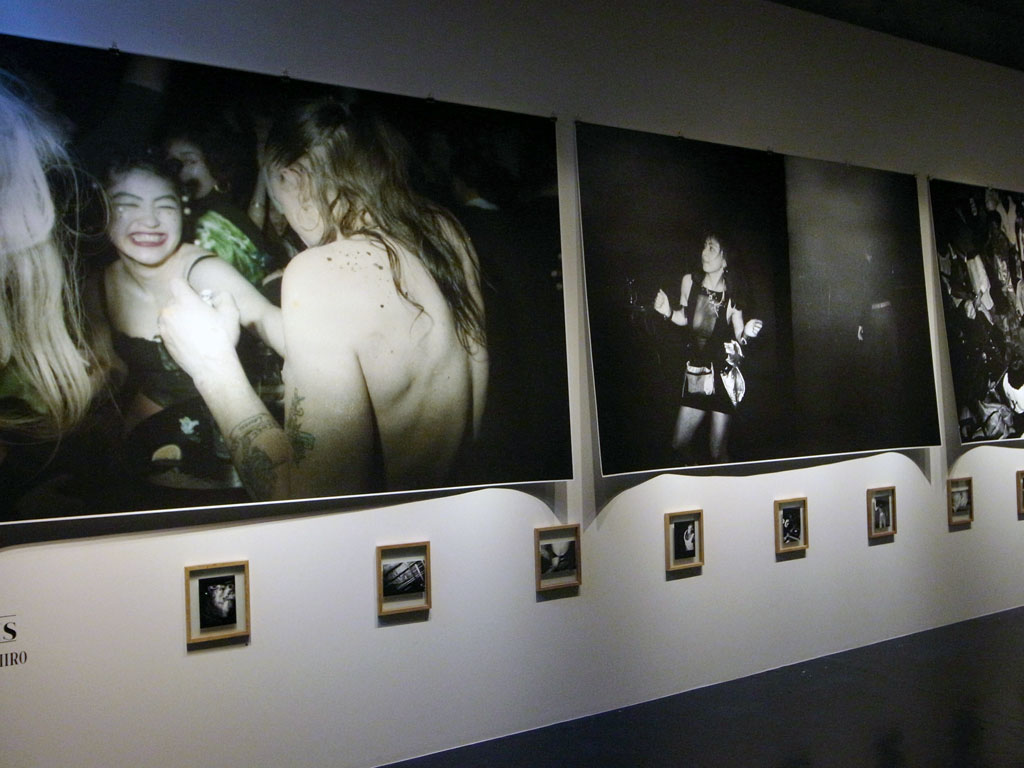
Enormous inkjet snapshots took up one wall while hundreds of smaller portraits, shown in a monochromatic grid, stretched across another.
The second exhibition of these pictures was held for a single Saturday night (10pm-6am June 23/24) at club located two stories under a Shibuya parking garage. Presented as two hundred A4 prints taped to the nightclub walls, viewing the pictures included dim light, throbbing music, and people (some heads-down in an iPhone) in the way. A nightclub was a fantastic way to experience these particular images.
Whether in exhibitions or the pages of the book itself, from the surface of paper these youthful faces look out to us in the future, meeting our glance as we catch a glance of the past. I think it’s precisely this point where photography happens.
In the afterward, Fujishiro writes that
“Even without an iPhone, we were somehow connected to the world, and loneliness only existed in someone else’s book.”
Certainly, no loneliness exists in this one.
“90 Nights” possesses the power to mean different things to people of different ages. It will appeal to those for whom their twenties in the nineties were spent in clubs like these- and for those who wish their twenties in the current (twenty)twenties could be. Well, it’s never too late- leave the smartphone at home, slide a compact camera into your pocket and see where the night takes you…
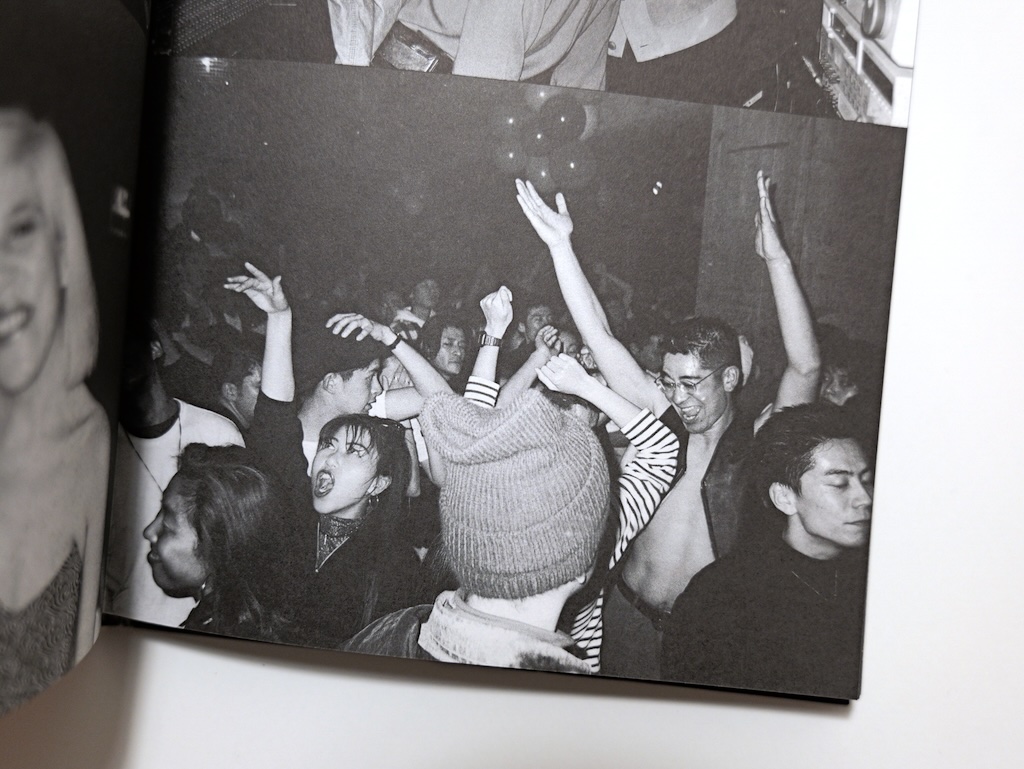
2020年代も半ばを過ぎようとしています。世界は相変わらず不透明で、デジタル接続の時代と言われる一方で、孤独と独居のレベルは高まり、特に若者にとって破壊的な社会的健康問題として認識されつつあります。テクノロジーの便利さに囲まれて形成された習慣のせいで、今を「反社会的な世紀」と考える人もいます。
40代半ばの私は、スマートフォン、さらにはインターネットが人類全体に普及する以前の生活をはっきりと覚えている最後の世代の一人だと言えます。1990年代を懐かしまないわけにはいかないのです。十分すぎるほど時間が経過し、十分すぎるほどいろいろなことが起こりました。私自身は渋谷や六本木のクラブで徹夜をしたことはありませんが、藤代冥砂さんの『90 Nights』はエネルギッシュでつながりのあった時代を振り返る素晴らしい作品です。
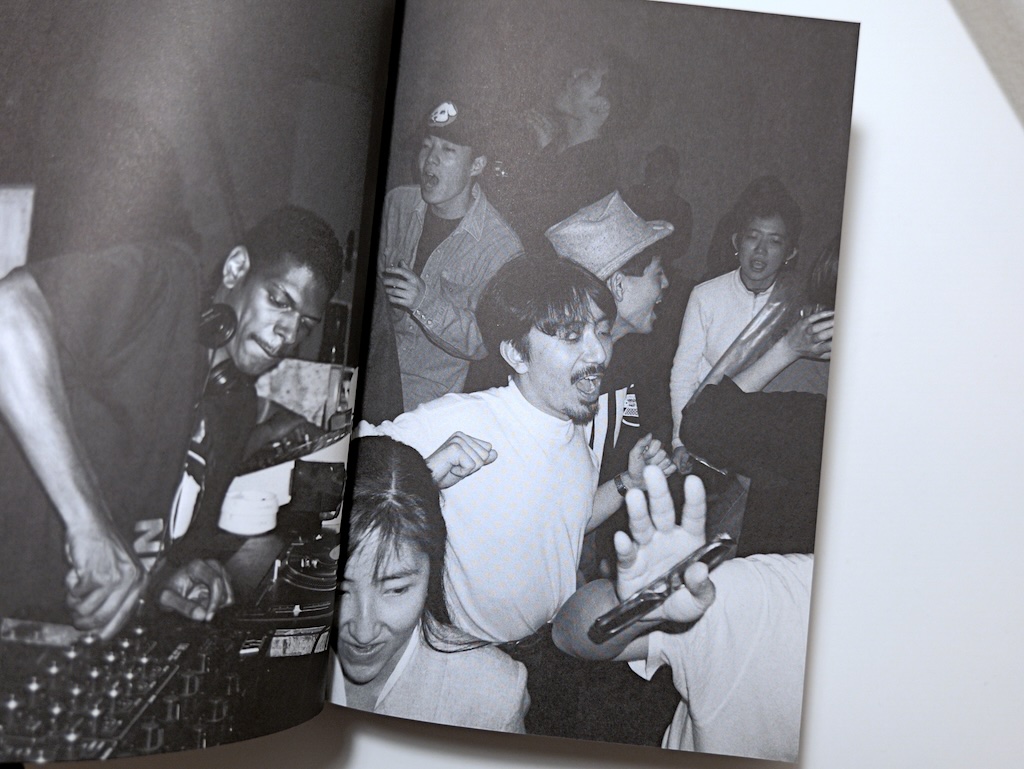
藤代さんは20代を、東京のあちこちにできたダンスクラブで過ごし、当時を代表するカメラ、コニカBIGminiでクラブにいる人たちのポートレートを撮っていました。シンプルなデザインでありながら、オートフォーカスの速さとフラッシュ調光機能の優秀さは、そのような環境では最高のカメラであったはずです。かさばる一眼レフとは違い、威圧感もなく、かわいらしいこのカメラは、ふとした瞬間にポケットから取り出すことができます。それ以外のカメラでは、藤代さんが群衆の中で作り上げたポートレートに見られる「親密さ」を阻害していたかもしれません。その後、彼は人気写真家として成功を収めましたが、人生の新たな章の幕開けとともに、この初期作は20年以上もしまい込まれていました。
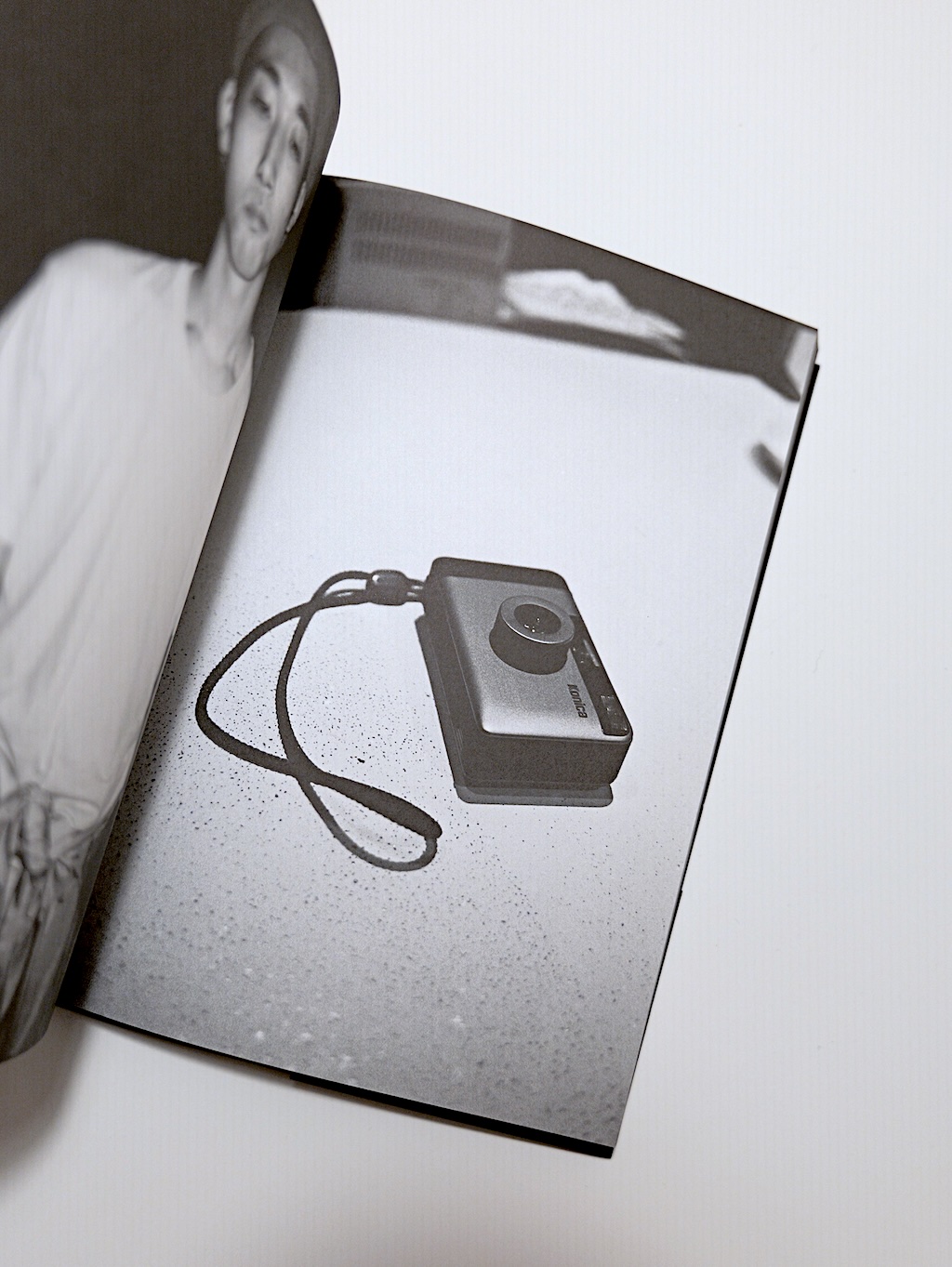
2010年代の後半、これらのネガを再発見し、この時代と光景を収めた写真集がまだ誰も出版していないことに気がついた藤代さんは、もう一度写真を見てみようと思ったそうです。フィルムスキャナーをタイムマシンに、彼はフレームに保存された人々と夜の世界に再び身を置きました。賑やかでビートの効いた写真と魅惑的なポートレートを織り交ぜた作品は、ハンディサイズのペーパーバックに編集され、出版社のトランスワールドジャパンから2018年に出版されました。
藤代さんのクラブ写真で最も印象的なのは、その魅力的な「無邪気さ」です。確かに、屈託のない被写体(そして彼らの90年代ファッション)そのものは見るだけで楽しいです。しかし、私はこのページに写っていないものに、気づかずにはいられません。それは現代文化に飽和している「自意識」の欠如です。
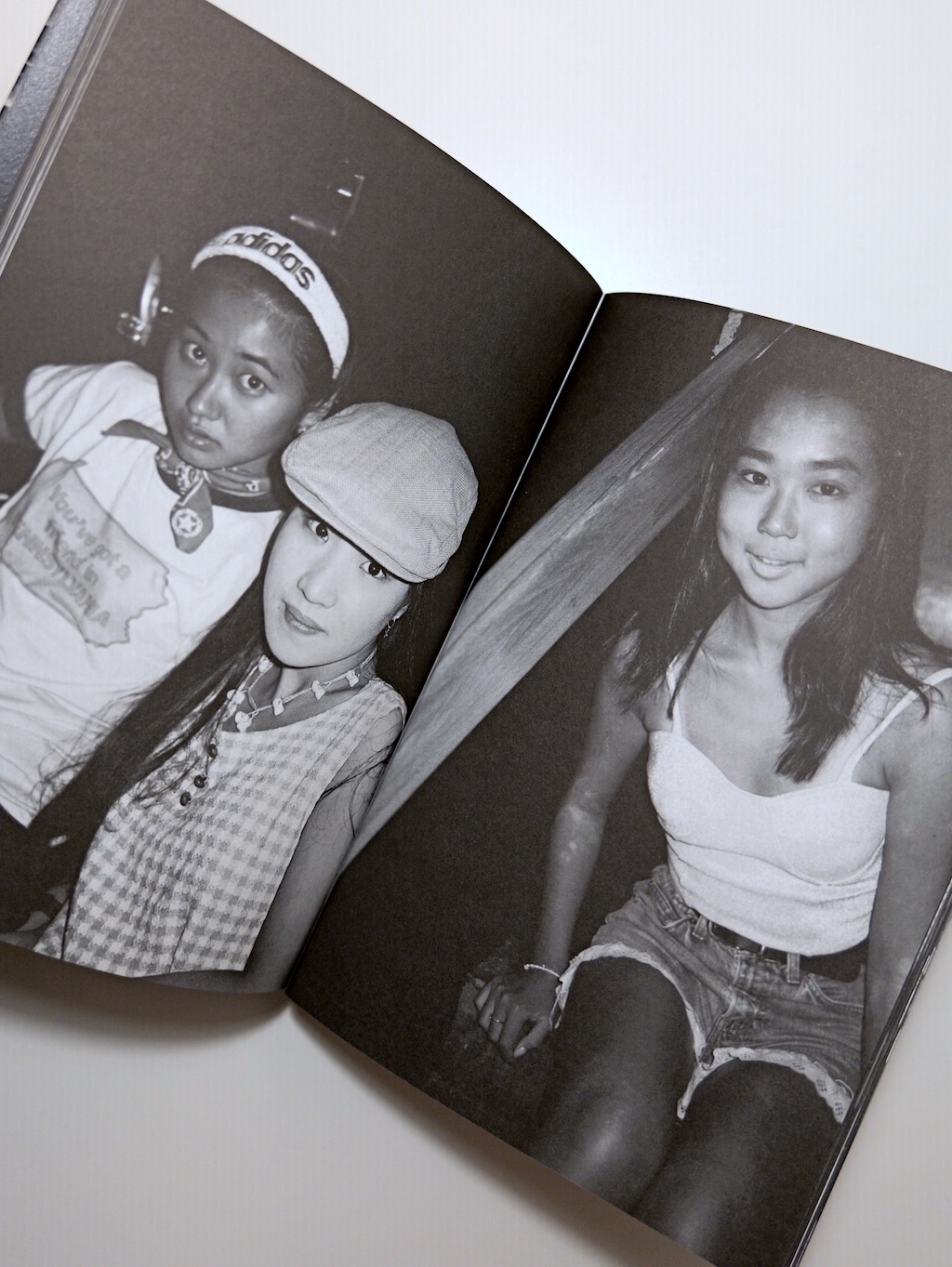
これらの写真は、直感的で、衝動的で、35mmフィルムで撮影された讃歌です。そこに写っている若者たちは、瞬間的に「何か」を「誰か」と一緒に楽しみ、経験するために「どこか」に出かけた個人です。ネット上の見知らぬ人たちに迎合したり、SNSにアップされた嘘に近い「生活」を気にしたりするのではなく、これらの写真に写っている誰もが、その瞬間、お互いのためにそこにいたのです。「現在に存在すること」はデフォルトであり、クラブにいる子供たちは、光り輝く手元のスクリーンが提供する逃避に騙される危険はありませんでした。
実は、この写真集の発売に合わせて「90 Nights」は2018年に2回展示されました。
2018年5月26日から6月3日まで開催された最初の展覧会は、表参道のBook Marcで行われました。Book Marcはその後、渋谷の新しいパルコに移転しましたが、この展覧会が開催された以前の場所は、書店の地下にある天井の高いユニークなギャラリースペースでした。金属製の階段を下りて会場に入るとまず上から展覧会を見ることができる、私が知っている唯一のギャラリーでした。
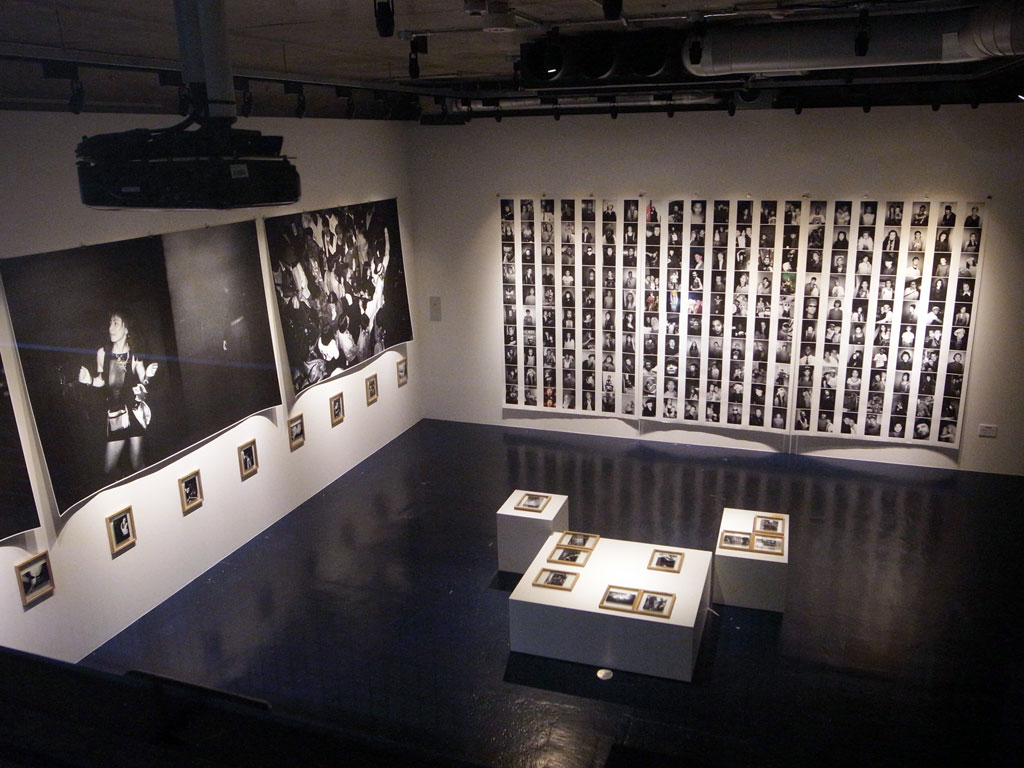
巨大なインクジェットのスナップショットが壁一面を占め、モノクロームのグリッドで表示された何百もの小さなポートレートが別の壁一面に広がっていたのは印象的でした。
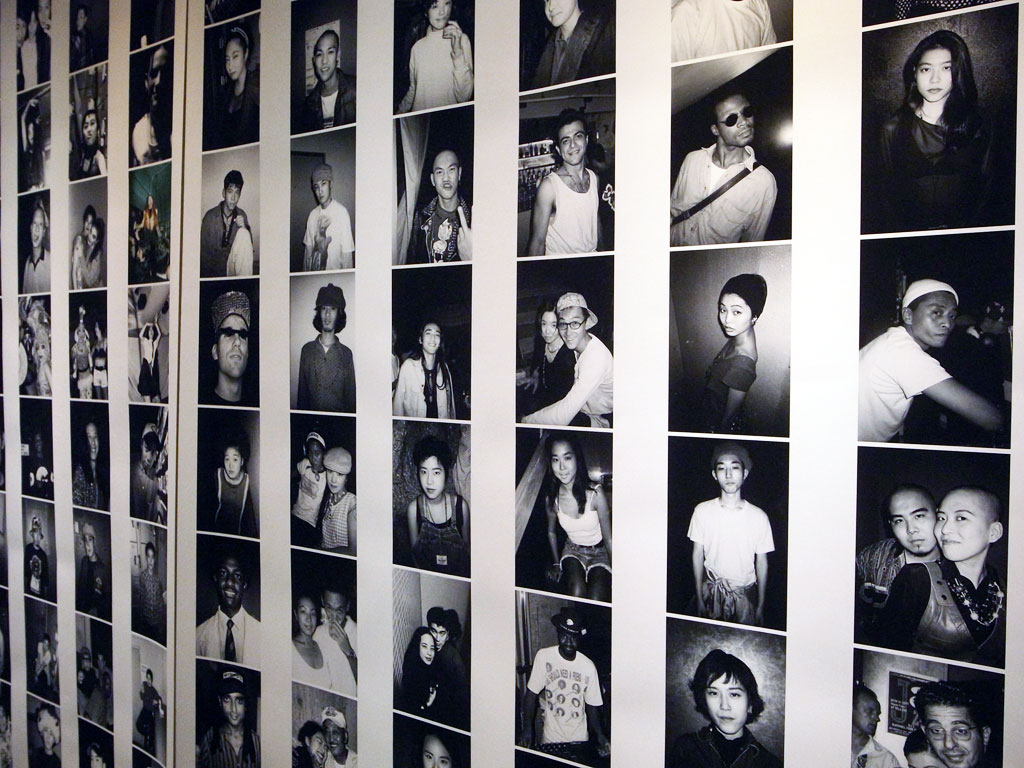
2回目の展示は、渋谷の駐車場の2階下にあるクラブで土曜日の夜(6月23日22:00~翌24日6:00)だけ開催されました。ナイトクラブの壁に貼られた200枚のA4プリントは、薄暗い照明、高鳴る音楽、そして鑑賞に邪魔な人々という空間に飾られていました。ナイトクラブでの展示は、これらの特別なイメージを体験する素晴らしい場所でした。
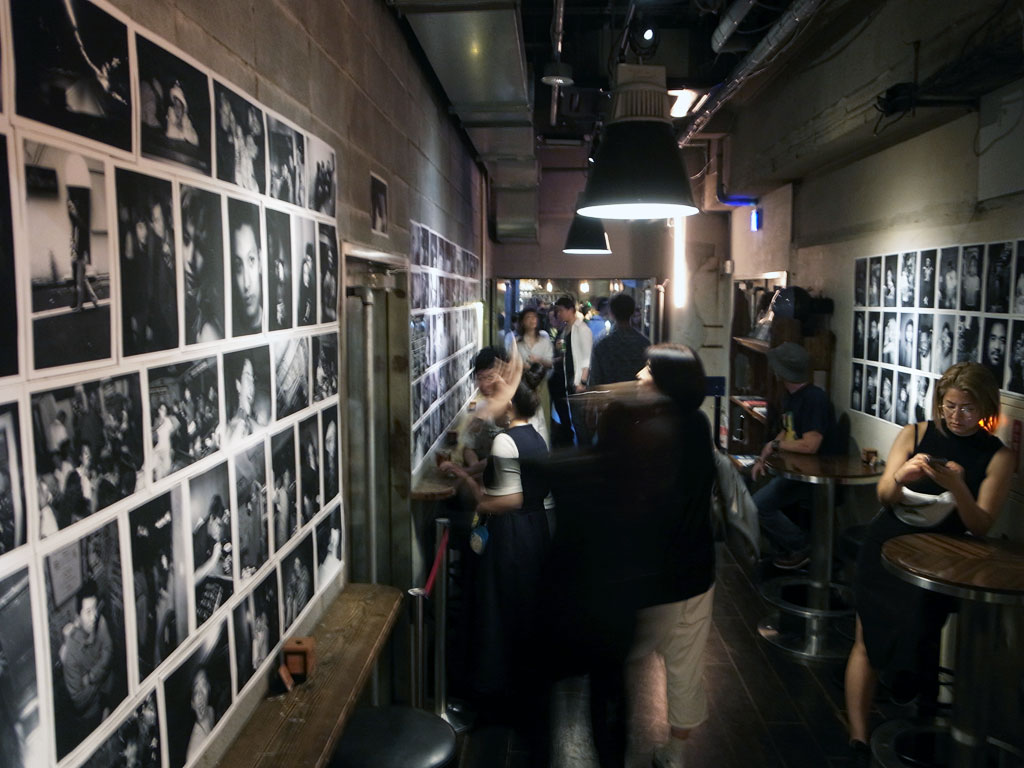
展覧会であれ、本のページそのものであれ、紙の表面の若々しい顔が未来を見つめ、現在の私たちの目が合う。写真とはまさに、このポイントで起こるのだと思います。
本書のあとがきで藤代さんはこう書いています。
- 「iPhoneは、まだなかったけれど、僕たちはなんとなく世界と繋がっていて、孤独は誰かの小説のなかにしかなかった」
『90 Nights』は、さまざまな年代の人々にさまざまな意味を与える力を持っている気がします。90年代の20代をこのようなクラブで過ごした人にとっても、今の20代がそうであってほしいと願う人にとっても、魅力的な作品でしょう。さあ、スマートフォンは家に置いておいて、コンパクトカメラをポケットに入れて、夜があなたをどこに連れて行くか見てみようじゃありませんか…。
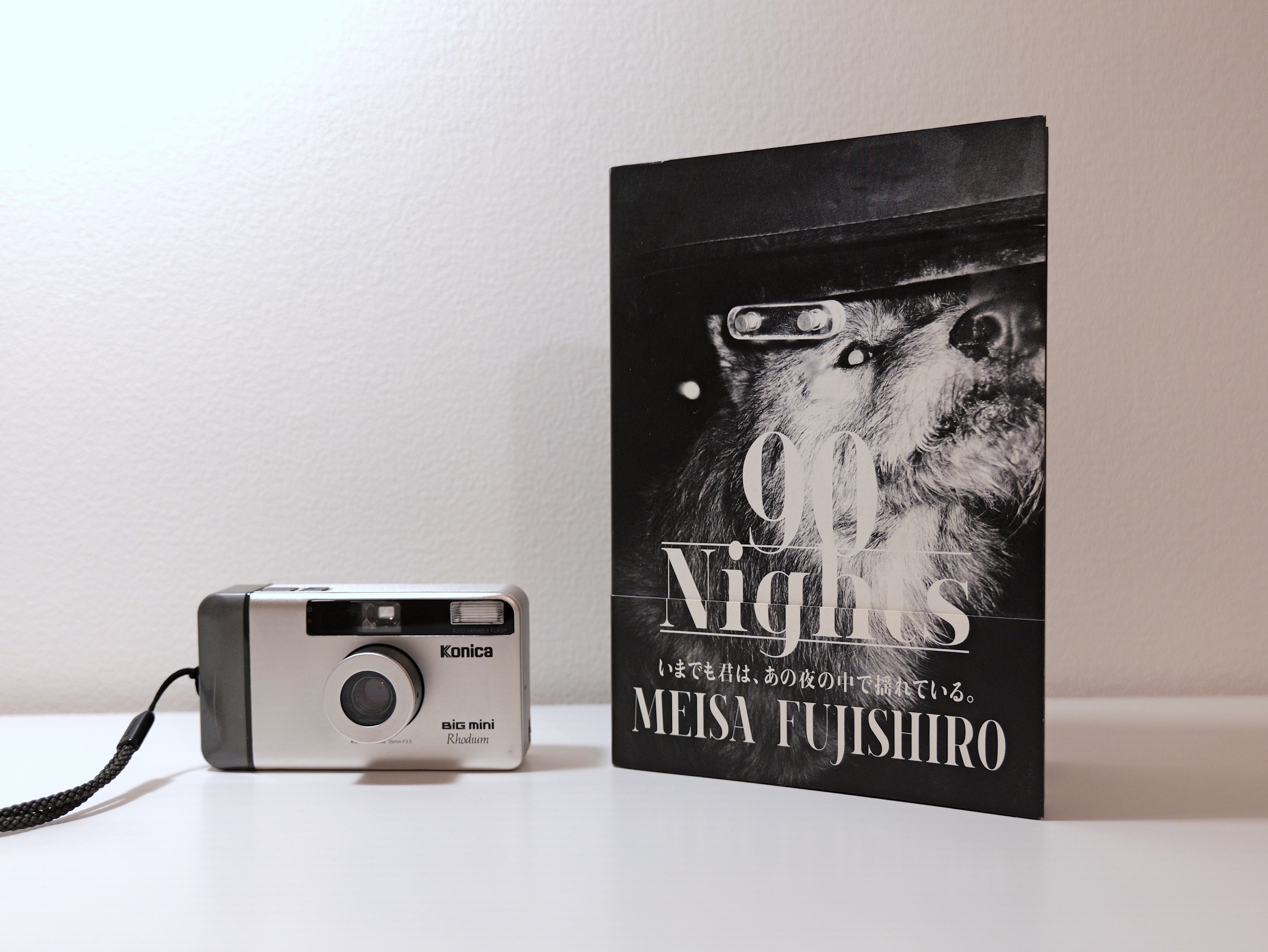
- Meisa Fujishiro “90 Nights”
- Publisher: Trans World Japan (May 31, 2018)
- softcover, 288pages
- ¥2,800+tax
- 藤代冥砂『90 Nights』
- 発行:トランスワールドジャパン株式会社
- 発売日:2018年5月31日
- 仕様:148×210mm、ソフトカバー、288ページ
- 価格:本体2,800円+税
https://www.transworldjapan.co.jp


PCT Membersは、Photo & Culture, Tokyoのウェブ会員制度です。
ご登録いただくと、最新の記事更新情報・ニュースをメールマガジンでお届け、また会員限定の読者プレゼントなども実施します。
今後はさらにサービスの拡充をはかり、より魅力的でお得な内容をご提供していく予定です。
 「Photo & Culture, Tokyo」最新の更新情報や、ニュースなどをお届けメールマガジンのお届け
「Photo & Culture, Tokyo」最新の更新情報や、ニュースなどをお届けメールマガジンのお届け 書籍、写真グッズなど会員限定の読者プレゼントを実施会員限定プレゼント
書籍、写真グッズなど会員限定の読者プレゼントを実施会員限定プレゼント